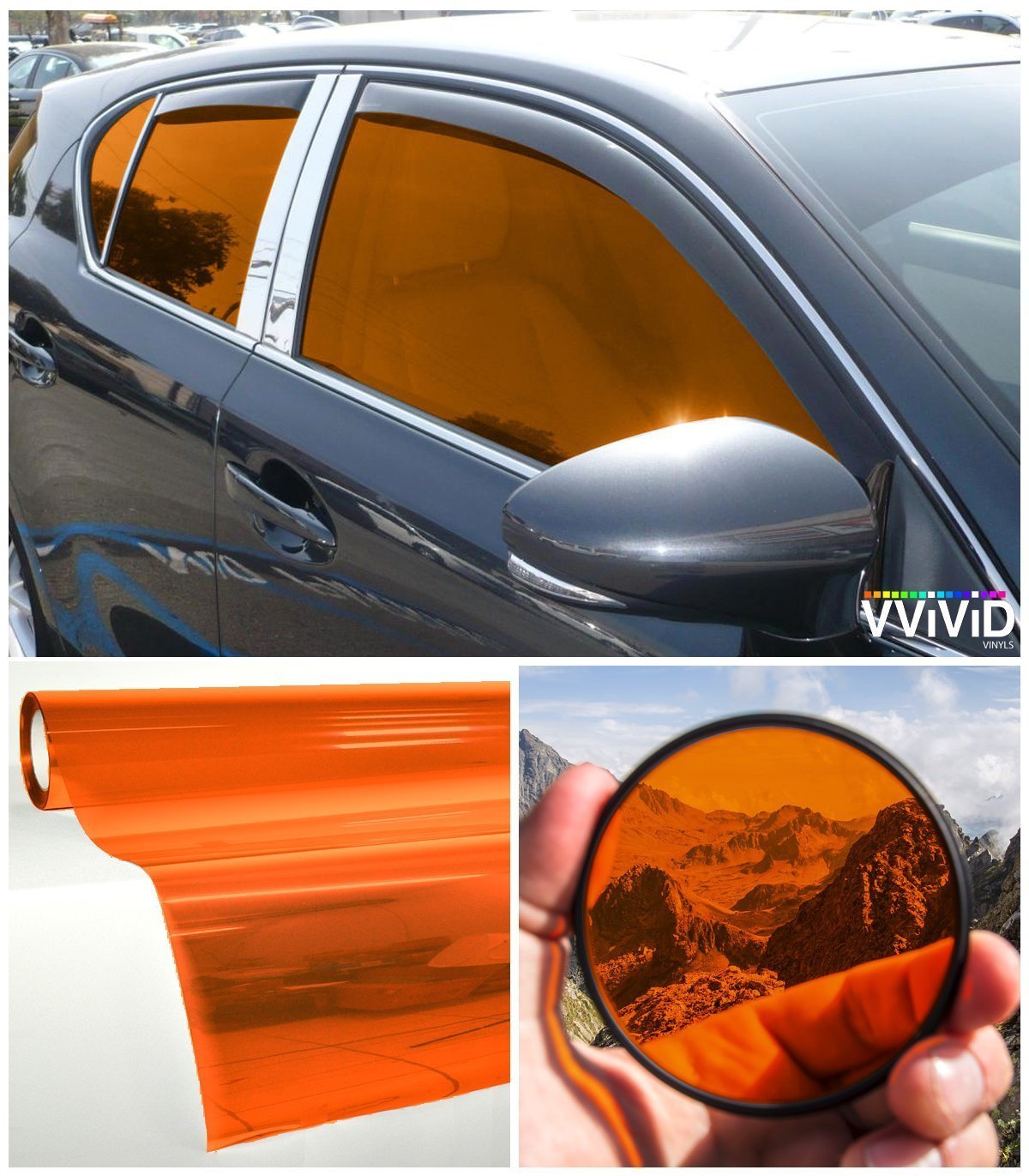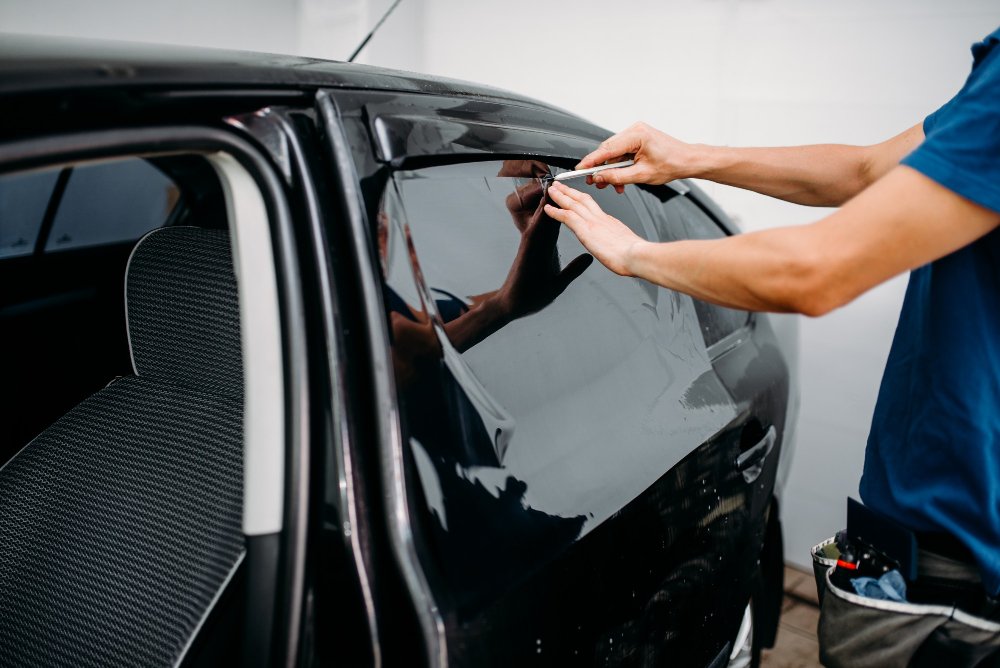Top Reasons Why automotive window tinting clinton township Is a Smart Investment for Vehicle Owners
Everything You Required to Know Concerning Automobile Window Tinting for Your Automobile
Car home window tinting is a sensible enhancement for several automobile owners. It supplies advantages such as enhanced convenience and energy effectiveness. Numerous tint movies accommodate various needs and choices. Understanding legal laws and picking the best color portion is essential. The setup procedure and correct upkeep likewise play considerable duties in ensuring the durability of the color. What various other factors should one take into consideration before choosing on home window tinting?
Advantages of Car Home Window Tinting
Some automobile proprietors might ignore it, automobile home window tinting offers many advantages that boost both the driving experience and the lorry's long life. Among the primary advantages is the decrease of warm accumulation inside the car, allowing for a more comfy adventure, especially during warm weather condition. This can bring about lowered dependence on cooling, improving gas efficiency.Additionally, window tinting offers security against harmful UV rays, which can cause skin damage and discolor indoor products with time. By obstructing these rays, the color aids maintain the automobile's inside and preserve its resale value.Moreover, colored windows can boost personal privacy and safety, as they make it more difficult for outsiders to see inside the car. This included layer of security can deter potential theft. Generally, vehicle home window tinting functions as a functional investment that contributes to both convenience and the lorry's overall health.
Kinds Of Window Tint Films
When considering vehicle window tinting, lorry proprietors come across a variety of window color films, each created to fulfill details needs and choices. The first group is dyed window movie, which supplies a standard level of privacy and UV defense while being economical. Next off, metalized films integrate tiny metallic bits, mirroring heat and improving sturdiness, although they may hinder electronic signals.Ceramic movies are an additional choice, known for their remarkable heat rejection and quality, providing high efficiency without signal interference. Hybrid films combine qualities of colored and metalized films, striking a balance between expense and functionality. Each type of home window tint film presents unique benefits, allowing lorry owners to select based on their certain demands, such as warm appearance, spending plan, and control factors to consider. Comprehending these options is important for making an informed decision pertaining to car home window tinting.
Comprehending Lawful Regulations
When considering automobile home window tinting, it is important to understand the lawful policies that govern color darkness limits and windshield color requirements. These policies can vary significantly from state to state, impacting what is allowable for lorry proprietors. Acquainting oneself with these legislations warranties compliance and helps avoid potential penalties or fines.
Color Darkness Limitations
Just how can car owners ensure they stay compliant with local regulations pertaining to home window tinting? Comprehending tint darkness limits is necessary. Each state has particular guidelines that determine the permitted degrees of darkness for window tints, which are gauged by Visible Light Transmission (VLT) portions. Generally, front-side home windows need to allow a greater portion of light compared to back windows. Some states might enable only 30% VLT for front home windows, while the back home windows could be allowed to have especially darker tints. To guarantee conformity, car proprietors ought to speak with state standards or regional regulation enforcement for accurate info. In addition, certified tinting experts can provide insights regarding lawful limits, making sure that automobile proprietors make notified choices.
Windshield Tint Regulations

State-Specific Regulations
Steering with the landscape of state-specific legislations regarding car window tinting requires cautious interest to information, as laws can vary significantly from one state to one more. Each state has its very own collection of guidelines regulating allowed color percentages, sorts of materials, and placement on car windows. Some states allow darker tints on back home windows while forbiding them on front home windows, while others have more stringent total restrictions (automotive window tinting clinton township). Additionally, certain states mandate the use of specific materials or call for qualification from installers. Failing to abide with these guidelines can lead to fines or the necessity to get rid of non-compliant tint. As a result, car owners should consult their state's Division of Electric motor Automobiles or relevant authority to guarantee adherence to local regulations
Choosing the Right Tint Percent
When choosing the best color percent for an automobile's windows, one need to consider go to this site different variables that affect both looks and performance. Color percents typically vary from 5% to 70%, with lower percents supplying darker shades and greater portions permitting a lot more light in. A darker tint can improve privacy and minimize glare, while a lighter color can maintain exposure and adhere to lawful restrictions.Furthermore, personal preference plays a substantial function in this choice. Some individuals might like the sleek appearance of darker colors, while others might prefer a more open, ventilated feeling. Furthermore, the vehicle's objective must be considered; for instance, those using their vehicles for industrial purposes may decide for lighter tints to keep an expert look.Ultimately, the ideal color percent balances personal design, convenience, and adherence to local guidelines, ensuring an enjoyable tinting experience.
The Installation Process
A successful installation of window tint needs cautious focus to information and the right tools. The procedure generally begins with extensive cleaning of the windows to eliminate debris, dirt, and dust, guaranteeing correct attachment of the film. When the surfaces are prepared, the installer actions and cuts the tint movie to fit each home window accurately.Next, the movie is placed on the glass, frequently using a remedy to promote very easy adjustment and stop air bubbles. Heat is in some cases related to the movie to conform it to the window's curves, enhancing its look and longevity. After confirming a smooth fit, the installer carefully trims any type of excess film along the edges.Finally, the installer checks for blemishes and verifies all sides are secure. This thorough strategy is necessary not only for looks however also for attaining the preferred efficiency advantages of home window tinting, such as UV protection and heat decrease.
Upkeep and Treatment for Tinted Windows
Correct maintenance and care are important for maintaining the stability of colored windows. Reliable cleaning strategies, the avoidance of dangerous chemicals, and regular examinations for damage play essential roles in ensuring long life. By following these standards, vehicle proprietors can keep the visual and practical benefits of their home window color.
Cleaning Up Strategies for Color
Preserving the quality and longevity of tinted home windows requires particular cleansing strategies tailored to the movie's fragile surface. It is necessary to use a soft microfiber fabric to stay clear of scratching the tint while cleaning. A mild remedy of water and a few drops of light recipe soap can efficiently eliminate dust and crud. It is recommended to use the cleansing option to the towel, instead of straight onto the colored surface area, to avoid wetness from permeating right into the sides of the film. Gentle, circular movements must be utilized to cleanse the home windows thoroughly. Regular cleansing helps maintain visibility and stops buildup, making sure that the color stays in prime condition gradually. Adhering to these strategies will certainly prolong the life of tinted windows.
Avoiding Damaging Chemicals
Although numerous house cleaning products work on different surface areas, they can posture considerable risks to tinted home windows. Chemicals such as ammonia, bleach, and certain solvents can deteriorate the color movie, bring about discoloration and peeling. Individuals need to go with pH-balanced cleansers particularly developed for tinted home windows. In addition, making use of soft microfiber towels will aid protect against scrapes and preserve the tint's integrity. Normal maintenance is important; subsequently, preventing extreme scrubbing up or rough materials is important. It is recommended to read item labels thoroughly to validate compatibility with window colors. By choosing the right cleansing solutions and devices, vehicle proprietors can preserve the appearance and capability of their tinted home windows, ensuring a much longer lifespan and optimal performance.
Inspecting for Damage
Normal evaluations of colored windows are crucial for identifying any type of indicators of damage that might compromise their efficiency and look. Owners ought to seek bubbling, peeling, or staining, as these issues can show poor installation or exposure to damaging elements. It is a good idea to check the sides of the film where peeling might begin and examine for any kind of scrapes that could impact exposure. In addition, ultraviolet (UV) rays can cause the tint to deteriorate gradually, so monitoring its performance in obstructing UV light is crucial. If any type of damage is found, punctual activity should be taken, which may include expert repair or replacement. Preserving tinted windows not only improves visual appeals however likewise warranties proceeded protection for both travelers and the automobile inside.
Typical Misconceptions Regarding Home Window Tinting
What misconceptions border home window tinting for automobiles? Many individuals believe that all window tints are unlawful, yet laws differ by state, enabling certain degrees of tinting. One more usual myth is that darker tints block even more warmth; nonetheless, the efficiency of home window films depends upon their modern technology instead than darkness. Some people likewise think that home window tinting is solely for aesthetic appeals, neglecting its advantages, such as UV security and glare decrease. Furthermore, several think that window tinting will certainly damage their automobile's glass, however properly applied colors can really improve glass longevity. Lastly, there is a belief useful reference that home window tints block exposure, yet top quality movies are created to keep clear sightlines while offering personal privacy. Understanding these misconceptions aids consumers make informed choices relating to window tinting, ensuring they delight in the complete variety of benefits it uses.
Regularly Asked Questions
Just How Long Does Home Window Tinting Generally Last?
The long life of home window tinting varies based upon factors such as setup top quality, film kind, and ecological conditions. Usually, other high-quality tint can last anywhere from five to 10 years before needing substitute or reapplication.
Can I Remove Window Color Myself?
Getting rid of window color oneself is possible, though it might be challenging. People should utilize a warmth source and adhesive remover to reduce the process, but care is recommended to stay clear of damaging the car's glass or inside.
What Tools Are Needed for Do It Yourself Home Window Tinting?

Will Home Window Tinting Damage My Automobile's Glass?
Home window tinting, when applied appropriately, normally does not harm a cars and truck's glass. However, inappropriate installation or low-grade films may result in peeling, bubbling, or damaging, potentially jeopardizing the honesty of the glass gradually.
Can Tinted Windows Influence My Car's Resale Worth?
The effect of colored home windows on a lorry's resale worth can differ. While some customers value the included privacy and UV security, others might watch it as a potential issue, possibly affecting resale positively or negatively. When taking into consideration auto home window tinting, lorry proprietors run into a selection of home window color films, each developed to meet details requirements and choices. When thinking about car window tinting, it is critical to recognize the lawful regulations that govern tint darkness restrictions and windscreen color demands. Normally, front-side windows should allow a greater portion of light compared to back home windows. Some states may allow just 30% VLT for front windows, while the back windows could be permitted to have notably darker tints. Some states permit darker colors on rear windows while restricting them on front windows, while others have more stringent total limitations.